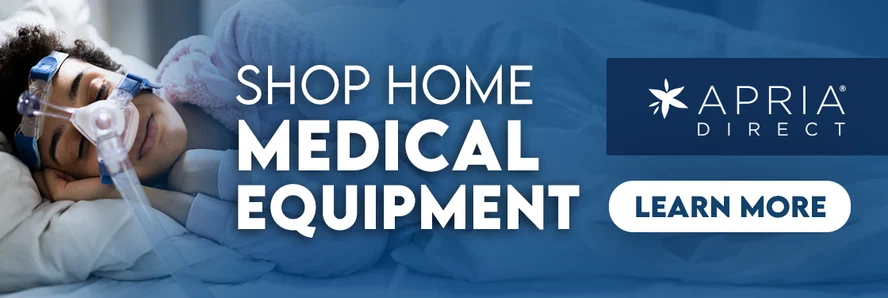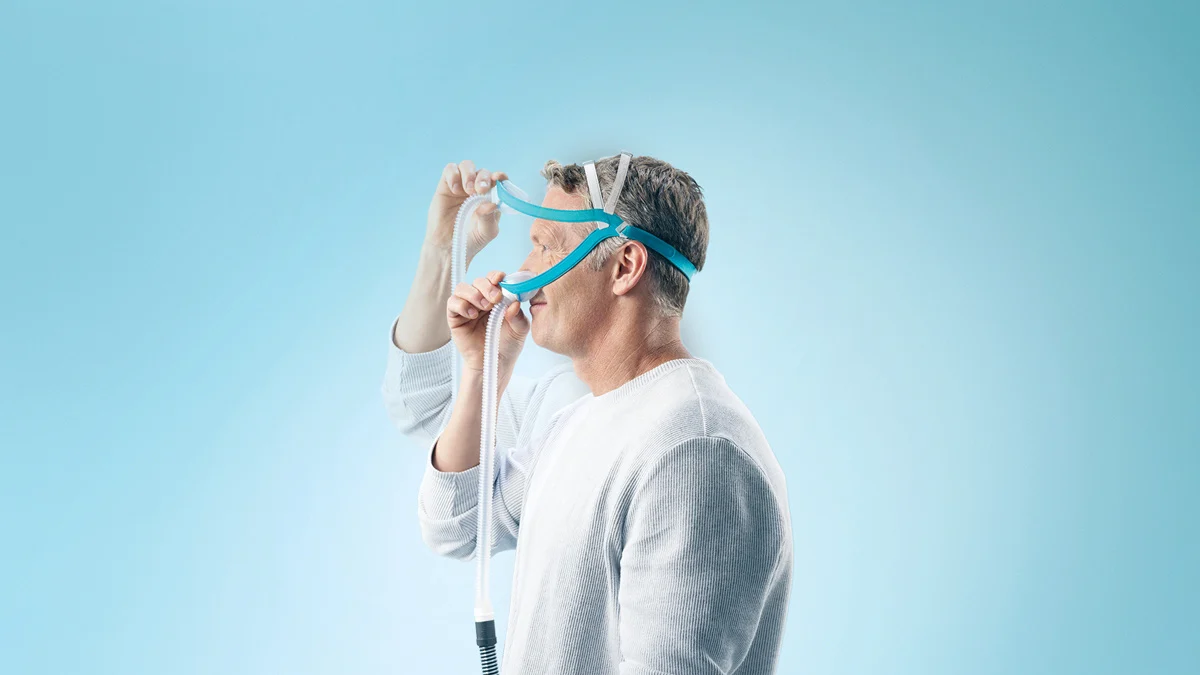Some People With COPD Find Non-Invasive Ventilation Challenging. Here’s How to Make it More Comfortable
For most people with COPD (chronic obstructive pulmonary disease), including chronic bronchitis and emphysema, as well as other respiratory conditions, non-invasive ventilation (NIV) is a safe, effective treatment.
NIV therapy requires that you wear a mask over your nose or mouth connected to a machine that delivers pressurized air to help increase your lung volume. By taking larger, deeper breaths, NIV helps you get rid of the carbon dioxide buildup in your lungs.
Studies show that NIV improves survival rates, reduces the risk of infection, and decreases the length of hospital stays in people with COPD.
Yet research also reveals that up to 40% of people stop using their NIV therapy because they find it too challenging or uncomfortable.-
It’s critical to adhere to your prescribed therapy to gain its many advantages, such as less shortness of breath, better sleep quality, and improved overall health and quality of life.
The good news: there are many simple things you can do to help you adjust to your NIV therapy—and make it more comfortable every time you use it!
1. Get Used to Your NIV Machine
For many people, it takes time to adjust to their NIV machine. The best way is to practice with your device:
- Wear just the mask on your face to see how it feels
- When you’re comfortable with the mask, wear it for a few hours each day and gradually increase your time
- Now, attach the hose to the mask and turn on the NIV machine. Turn it on for 5 minutes, then 10—until you feel comfortable with your machine
- Use your NIV machine while you’re watching TV or doing other activities, to take your attention off your therapy
- Use mouth piece ventilation throughout the daytime (if prescribed)
2. Select the Right NIV Machine
There are many makes and models, each offering various features. Your doctor will order the most appropriate machine for your needs and the respiratory therapist will explain how to use and care for it.
3. Choose the Perfect Mask
Your doctor or respiratory therapist will help you select the mask that’s right for you—one that fits your face firmly, snugly, and comfortably. Here are two popular masks:
Nasal masks: These compact masks create a tight seal over your nose and upper lip. They can also withstand higher pressure settings. For people who breathe through their mouth, a chinstrap is sometimes recommended. But if you experience significant nasal congestion, nasal masks can be difficult to tolerate.
Full-face masks: If you find nasal masks uncomfortable, full-face masks may be right for you. They cover both your nose and mouth and secure under your chin to provide a firm seal. Full-face masks are a good choice for NIV to ensure the optimal pressure delivery and therapy benefit is achieved, especially if you breathe through your mouth. However, if you feel claustrophobic wearing a full-face mask, you should contact your care provider and review other mask alternatives.
4. Deal With Mask Leaks
One of the most frequent complaints we hear from NIV users is that their mask leaks. When they exhale, air rushes into their eyes, drying them out. They wake with a dry mouth or sore throat. Or they hear whistling noises, which bothers their bed partner.
A leaky mask also prevents you from getting the full air pressure you need.
Best way to prevent leaks:
- Make sure your mask and headgear are the right size
- Inspect your mask for tears or holes, replace as necessary
- Clean your mask as outlined in the manufacturer's recommendations, dirty masks won’t seal properly
- Place them properly on your face to create a snug, airtight seal but not too tight. Masks are not made to be tightened down. They are made to use the air pressure and resistance of the straps create an airtight seal.
- Purchase mask liners to improve your mask’s seal
- If you are a side sleeper, consider purchasing a NIV pillow, commonly also referred to as a CPAP pillow, which has special cut-outs to accommodate your mask and tubes and help prevent mask dislodgement
5. Stick With Your Prescribed Air Pressure
Some people ask if they can use their NIV at a lower pressure while they are getting used to it. The answer is yes, as long as your doctor is willing to write orders which allow the respiratory therapist to titrate your settings.
Over time, your doctor also may need to adjust the air pressure setting due to changes in your health or weight. Make sure you are communicating changes to your respiratory therapist as they can work with your physician to make sure you are on the appropriate settings.
6. Prevent Nose and Mouth Dryness
NIV can cause mouth and nose dryness. If you feel dry, humidify! Adding a humidifier adds warmth and moisture to the air you breathe to make your NIV therapy more comfortable. It also reduces the risk of bloody noses and infections.
Heated tubing increases humidity and reduces the buildup of moisture inside the tubing.
You may also want to add a room humidifier. And over-the-counter saline-based nasal sprays and gels help with nasal dryness.
7. Reduce Skin Irritation
Masks can sometimes irritate your skin. Mask liners and headgear strap covers help reduce skin irritation and marks on your face.
Regularly clean your NIV machine and equipment to prevent the accumulation of harmful germs and dirt, which can irritate your skin.
And don’t overtighten your mask, which can lead to pressure sores.
8. Talk to Your Doc
If you have any concerns about your NIV machine or therapy, speak with your healthcare provider. Working together, you can find ways to make your treatment more comfortable so you can take advantage of all the healthcare benefits it offers.
And don’t hesitate to contact our team of specialists – leaders in the management of COPD and other respiratory conditions – for any information you may need!
References
1. Cammarota G, Simonte R, De Robertis E. Comfort During Non-invasive Ventilation. Front Med (Lausanne). 2022 Mar 24;9:874250. doi: 10.3389/fmed.2022.874250. Erratum in: Front Med (Lausanne). 2023 Apr 04;10:1193466. PMID: 35402465; PMCID: PMC8988041.
2. Non-Invasive Ventilation (NIV). Indiana University Health. https://iuhealth.org/find-medical-services/niv#:~:text=At%20first%2C%20it %20may%20be,to%20not%20use%20the%20machine.
3. Sergew, A. (2019, August 1). Noninvasive Ventilator Use for Neuromuscular Weakness: A Guide to Noninvasive Ventilator (NIV). National Jewish Health.
https://www.nationaljewish.org/conditions/amyotrophic-lateral-sclerosis-als/lifestyle-management/a-guide-to-noninvasive-ventilator-niv-us-for-neuromuscular-weakness.
LEGAL DISCLAIMER: Material in this newsletter is provided for general health education and informational purposes and to provide references to other resources only; it may not apply to you as an individual. While Apria Healthcare believes that the information provided through this communication is accurate and reliable, Apria Healthcare cannot and does not make any such guarantee. It is not intended to be a replacement for professional medical advice, evaluation, diagnosis, services or treatment (collectively, “medical treatment”). Please see your healthcare provider for medical treatment related to you and your specific health condition(s). Never disregard medical advice or delay seeking medical care because of something you have read on or accessed through this website. Reading this newsletter should not be construed to mean that you have a healthcare provider/patient relationship.






